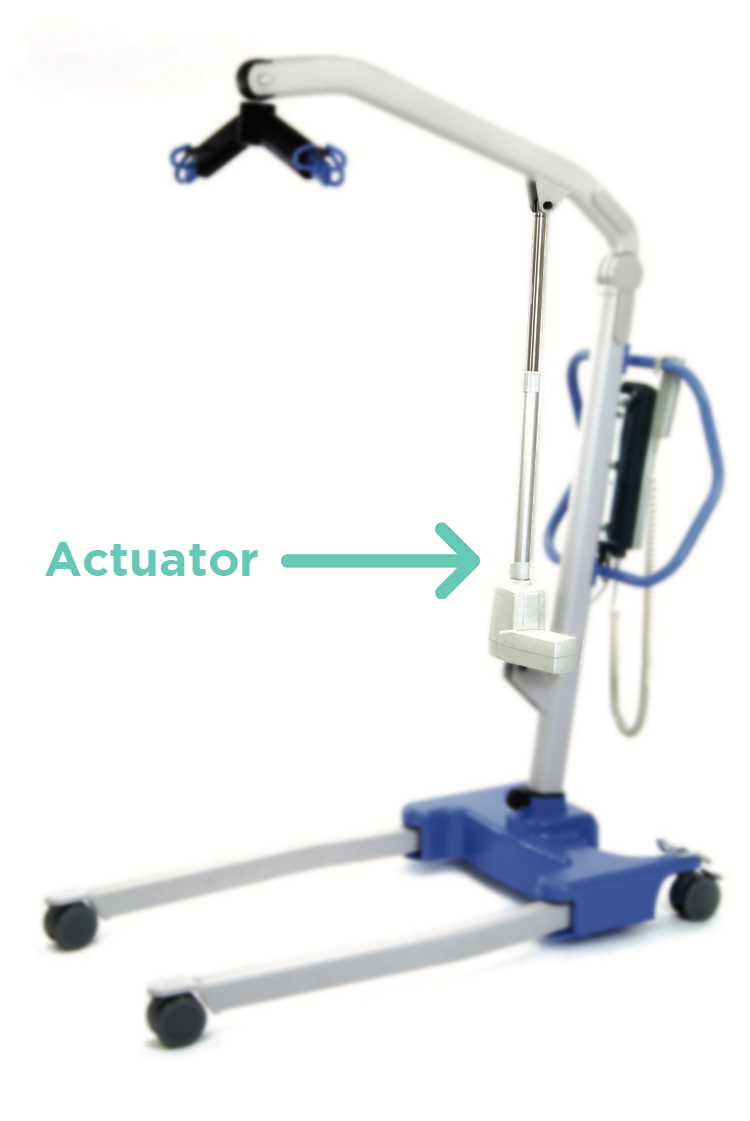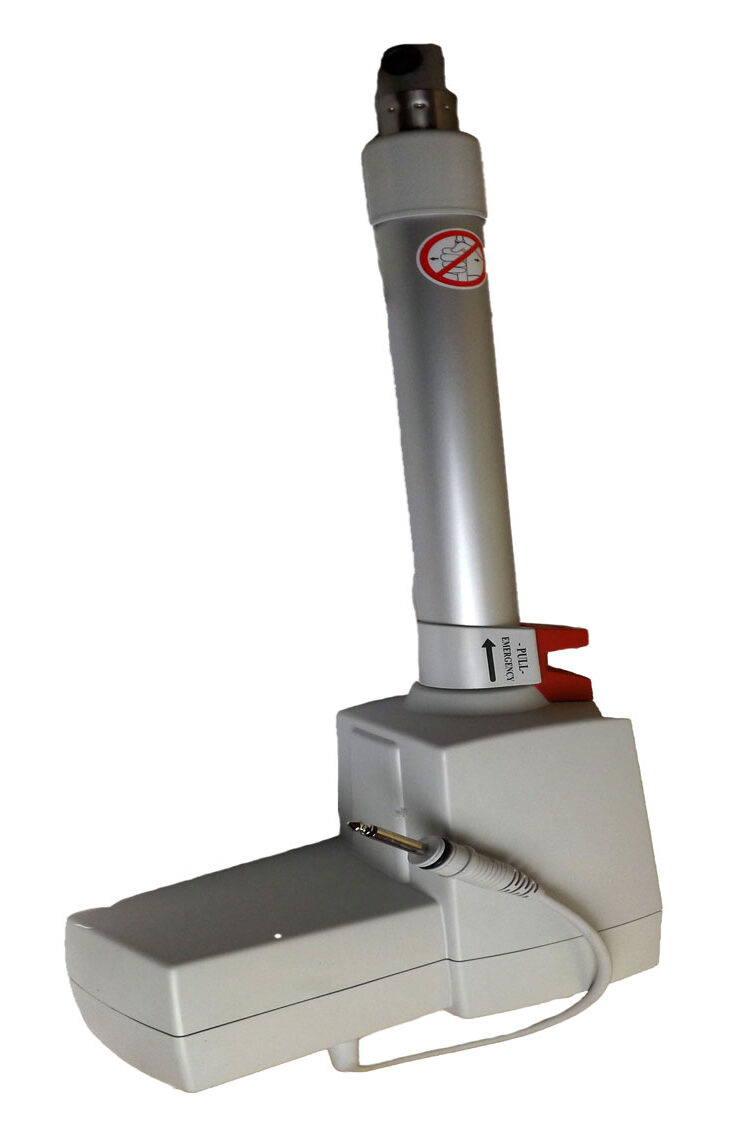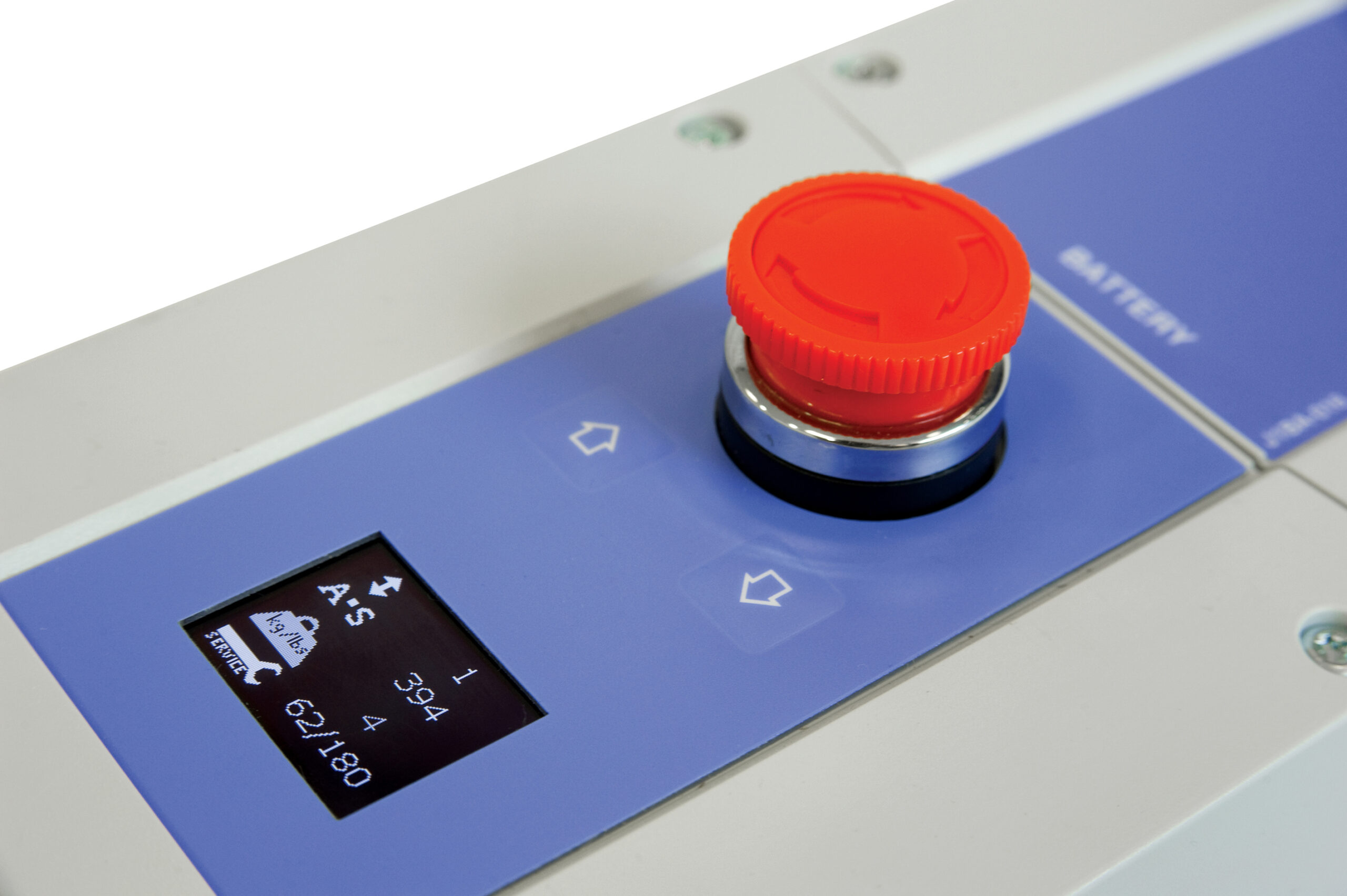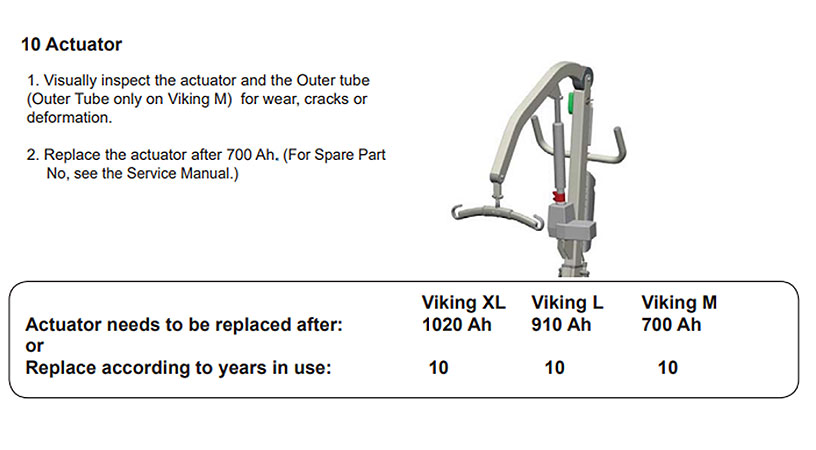The Benefits of Changing the Actuator on Your Mobile Hoist
10 Minute Read
Asset Management | Care Homes | Compliance | Costs | Healthcare Equipment | Infection Control | Lifecycle Replacement | LOLER | Maintenance Tips | Medaco | Mobile Hoists | Patient Handling Equipment | PPM | PUWER | Regulations | SEND Schools | Service | Spare Parts | Stand Aids | Troubleshooting |
As a service and maintenance provider of patient handling equipment, we are often recommending that our customers change the actuators on their mobile hoists, in line with manufacturer’s recommendations.
It is our duty of care and responsibility as a service provider to ensure we are following these recommendations and providing the best advice and guidance to our customers. However, it can be difficult for customers to understand why they need to change their actuator, especially when the mobile hoist is in good working condition.
We’re often asked, “Why should I change the actuator on my mobile hoist?” so we thought we’d write an article to cover the importance of changing your actuator when it is recommended to do so, by the manufacturer.
What is an actuator and why is it important?
Let’s get technical for a moment!
According to LINAK, a well know actuator manufacturer, actuators are mechanical equipment that create a motion in a straight line, rather than a circular motion of a conventional electric motor.
They are used in a variety of moving and handling equipment where a linear movement is required. Examples include mobile hoists, profiling beds, integrated bath chairs etc. In this article, we are going to concentrate on actuators in mobile hoists.
Actuators are connected to a control box, which is then connected to a handset:



Actuator Inspections and Testing
Actuators are tested as part of the periodic inspections that are carried out on mobile hoists (LOLER and Annual Service). During these inspections, engineers check the full functionality of the hoist as well as the following checks for the actuator:
- Moving the mast and boom to ensure the actuator is functioning correctly. They will move the actuators through the entire length of the lift to ensure a smooth operation. (During an annual service they will perform this test with a load).
- Noise level check: As part of the load test, the engineer will also listen for unusual sounds such as ticking, grinding or screeching
- Inspect the mounting brackets and points to make sure they are secure, undamaged and have no signs of excessive wear and tear
- Check the emergency stop button, to ensure it isolates the power to the actuator, when depressed
- Test the function of the anti-crush switches on the lifting actuator
- Check the control box is correctly plugged into the actuator
It’s during these inspections that your engineer is most likely to recommend a replacement actuator, should it meet the manufacturer’s recommendations for replacement.
Why should you replace an actuator and how often should you replace it?
During a LOLER inspection or annual service, engineers may pick up some of the following issues which could mean a replacement actuator is needed, or just the specific part needs replacing:
- The actuator jack plug or lead is damaged
- The cover to the actuator becomes damaged which could expose or compromise moving parts within
- The actuator and moving parts could start to leak grease
- Fulcrum pins can break or show wear and tear
- The actuator could be put under excessive stress and break if the safe working load of the hoist is exceeded
- Noises such as ticking, grinding or screeching could indicate an issue
If your mobile hoist is in good working order and none of the above issues occur, you may wonder why the engineer has recommended you replace the actuator – this is down to the manufacturer’s recommendations.
Manufacturer’s recommendations for replacing mobile hoist actuators
Manufacturers of mobile hoists will take guidance from the manufacturer of the actuator they use. As actuators are sealed within a unit, you can never be sure if a failure has occurred. Therefore, manufacturers recommend actuators are replaced, as they are a safety-critical part, and they want to minimise the risk of failure.
This information can usually be found in the user manual or technical service manual of the equipment.
Manufacturers recommend you replace the actuator on your hoist after a certain number of years or cycles (lifts) – this is calculated following extensive lifetime testing of actuators for hoists under BS EN ISO 10535: 2006 requirements.
Cycles (lifts) on mobile hoists with smart monitors
Manufacturers recommend that actuators should be replaced at 40,000 cycles (lifts) or sooner if deemed necessary following an inspection.
Some newer mobile hoists come with ‘smart monitors’ which provide information such as total lifting cycles, total work done, overloads and number of days since the last service, which can be used to quickly and easily evaluate the condition of the lift actuator.

However, not all mobile hoists, especially older ones, come with a digital display, so the engineer cannot determine the total cycle count.
If this is the case, then the age of the actuator can be used.
Age of Actuator
As mentioned before, you can check this information in the user or service manual, but the majority of manufacturers recommend the actuator is replaced at 10 years.

Actuator usage indicator calculation
One final way to assess if an actuator should be replaced is to calculate the total life cycle count through an actuator usage indicator calculation. This can be estimated by the age of the actuator (in years) and approximate lifts per day. However, this technique isn’t commonly used as the lifts per day aren’t always accurately recorded and monitored by the care facility.

Please note, that with every guidance from manufacturers, the cycle count or age of the actuator is only applicable where the hoist has been serviced and maintained according to the manufacturer’s recommendations and has passed LOLER inspection.
When should you repair vs replace?
If an engineer does recommend a replacement actuator after an inspection or service – you may be wondering if it’s worth it, depending on the age and condition of the mobile hoist.
Actuators can vary in price, depending on the manufacturer and this is a big consideration when deciding whether to repair or replace your mobile hoist.
Generally, if the cost to repair is greater than 50% of the value of the hoist, and the hoist is more than halfway through its expected lifecycle, then you should consider replacing the entire mobile hoist.
What are the risks if you don’t replace your actuator?
Manufacturers and therefore engineers, recommend you replace your actuator when it’s close to or has exceeded its expected lifespan. As it is a recommendation, it is your decision as to whether to replace it or not. Below outlines the risks if you choose not to replace your actuator.
- Risk of Safety to Staff and Users – Whilst it may seem like unnecessary and additional costs to replace your actuator, consider the risk to your staff and service users if something were to go wrong. It could lead to a serious injury and even death. Whilst there are fail-safe mechanisms in place to reduce the chance of this happening, it could be the fail-safe that breaks at the same time.
- Equipment Downtime – If the actuator breaks or stops working unexpectedly, your hoist will be out of service. You will then need to wait until an engineer can visit, diagnose the fault, and then repair/replace the actuator. If you replace it before it breaks, during a proactive planned visit, you can put the necessary steps in place to work around this for the time it’s out of action.
Conclusion
Under LOLER and PUWER regulations, which govern most work equipment including mobile hoists – Service and Maintenance providers must maintain all equipment to the manufacturer’s recommendations, so it would be negligent on their behalf if they didn’t make this recommendation.
This means it is the responsibility of the owner/responsible person to decide on whether to replace the actuator or not.
It is usually the financial impact that makes the decision harder, but you need to weigh this up against the risk of staff or users being seriously injured if something goes wrong.
Medaco aims to enable our customers to make informed decisions with transparent information and data. So, if you have more questions about replacing the actuators on your mobile hoist or other care equipment, request a call back below and our technical team will be more than happy to assist.
